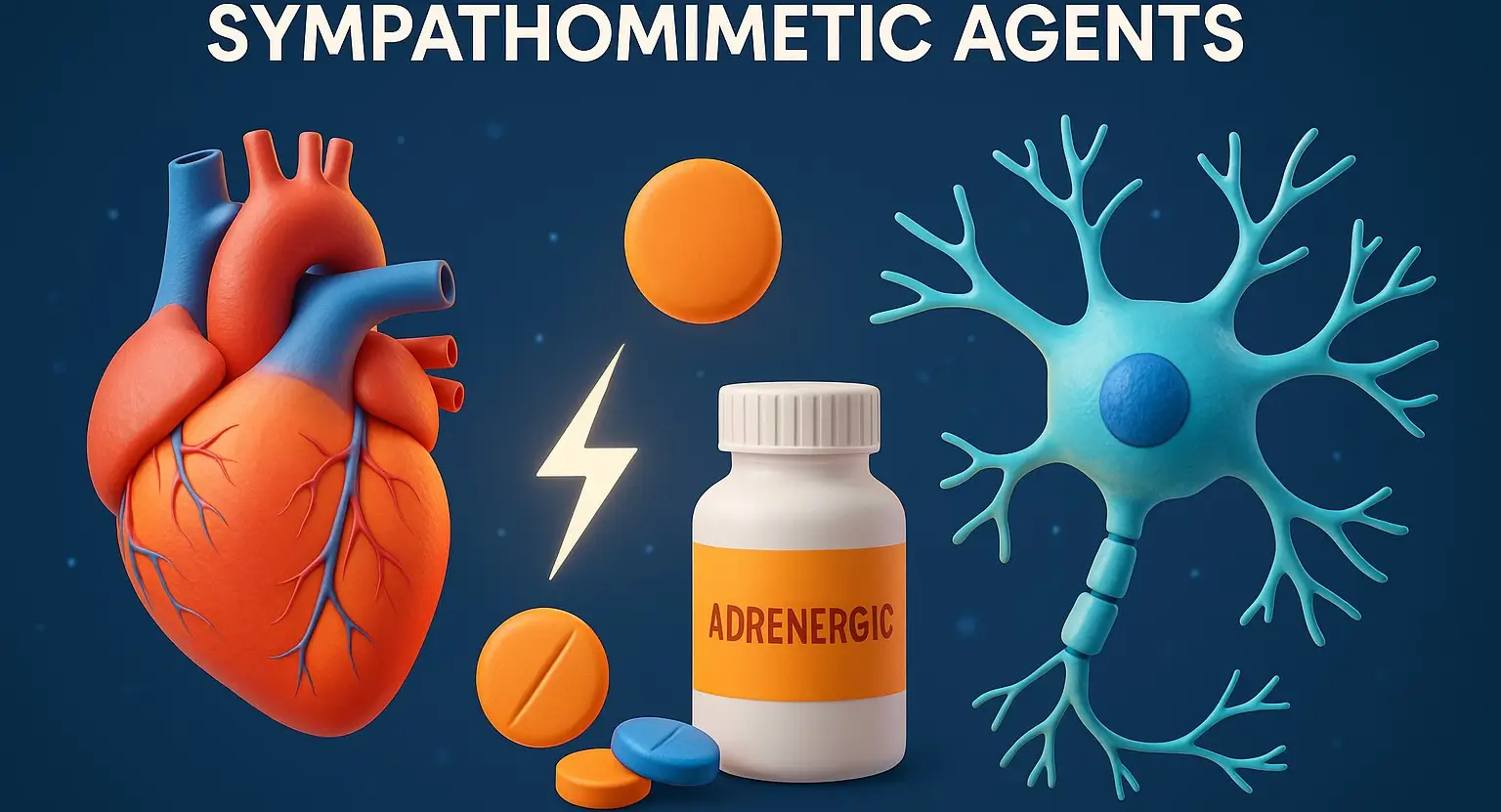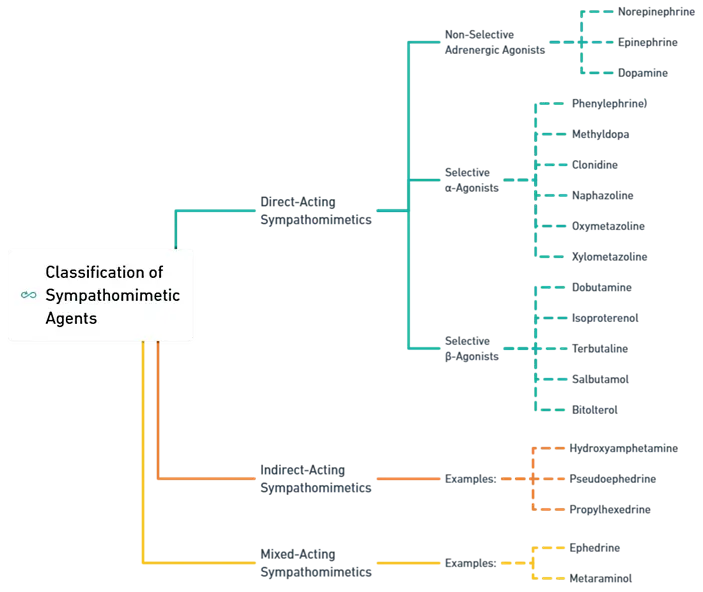- Sympathomimetic Agents the actions of endogenous catecholamines.
- They are broadly classified into three groups based on their mechanism of action:
Classification of Sympathomimetic Agents
- Sympathomimetic agents are drugs that mimic the actions of the sympathetic (adrenergic) nervous system.
- They are classified based on their mechanism of action in activating adrenergic receptors.

1. Direct-Acting Sympathomimetics
-
Mechanism:
- These agents directly bind to and stimulate adrenergic receptors (α and/or β), reproducing the effects of endogenous catecholamines.
-
Key Points:
- Their action is receptor-mediated.
- They can have selectivity for α-receptors, β-receptors, or both.
- Some of these drugs also have central effects.
-
Examples:
- Non-Selective Adrenergic Agonists (α and β receptors):
- Norepinephrine
- Epinephrine
- Dopamine
- Selective α-Agonists:
- Phenylephrine (α₁-selective)
- Methyldopa (α₂-selective, centrally acting)
- Clonidine (α₂-selective, centrally acting)
- Naphazoline (α₁-selective, used as a decongestant)
- Oxymetazoline (α₁ and partial α₂-selective, used as a decongestant)
- Xylometazoline (α₁ and partial α₂-selective, used as a decongestant)
- Selective β-Agonists:
- Dobutamine (β₁-selective, used in heart failure)
- Isoproterenol (non-selective β₁ and β₂ agonist)
- Terbutaline (β₂-selective, used in asthma & preterm labor)
- Salbutamol (Albuterol) (β₂-selective, used in asthma)
- Bitolterol (β₂-selective, used in asthma)
- Non-Selective Adrenergic Agonists (α and β receptors):
2. Indirect-Acting Sympathomimetics
-
Mechanism:
- These drugs do not directly activate adrenergic receptors but instead:
- Promote the release of endogenous catecholamines (norepinephrine, dopamine, epinephrine).
- Inhibit the reuptake of catecholamines, thereby enhancing the sympathetic response.
-
Key Points:
- Their effect depends on the presence of stored catecholamines.
- They indirectly increase the stimulation of adrenergic receptors.
-
Examples:
- Hydroxyamphetamine (induces norepinephrine release, used in pupil dilation)
- Pseudoephedrine (induces norepinephrine release, used as a decongestant)
- Propylhexedrine (causes norepinephrine release, used as a nasal decongestant)
3. Mixed-Acting Sympathomimetics
-
Mechanism:
- These agents have both direct receptor agonist activity and the ability to stimulate the release of endogenous catecholamines.
-
Key Points:
- They provide a dual mechanism of action (direct activation + indirect release of catecholamines).
- This can lead to a broader range of effects compared to purely direct-acting or indirect-acting agents.
-
Examples:
- Ephedrine (directly activates α and β receptors & releases norepinephrine)
- Metaraminol (direct α₁ agonist & causes norepinephrine release, used in hypotension)
Click Here to Watch the Best Pharma Videos


